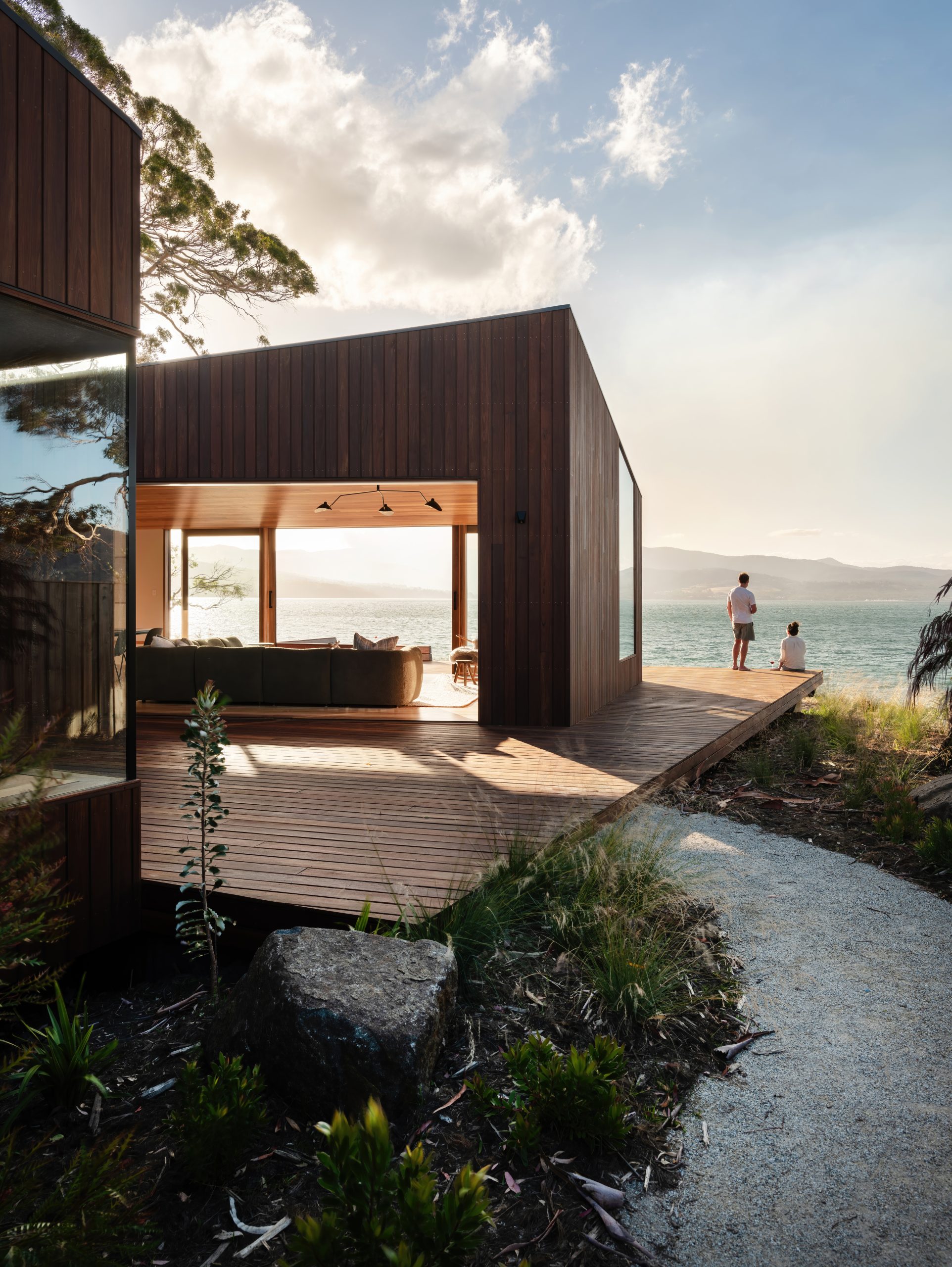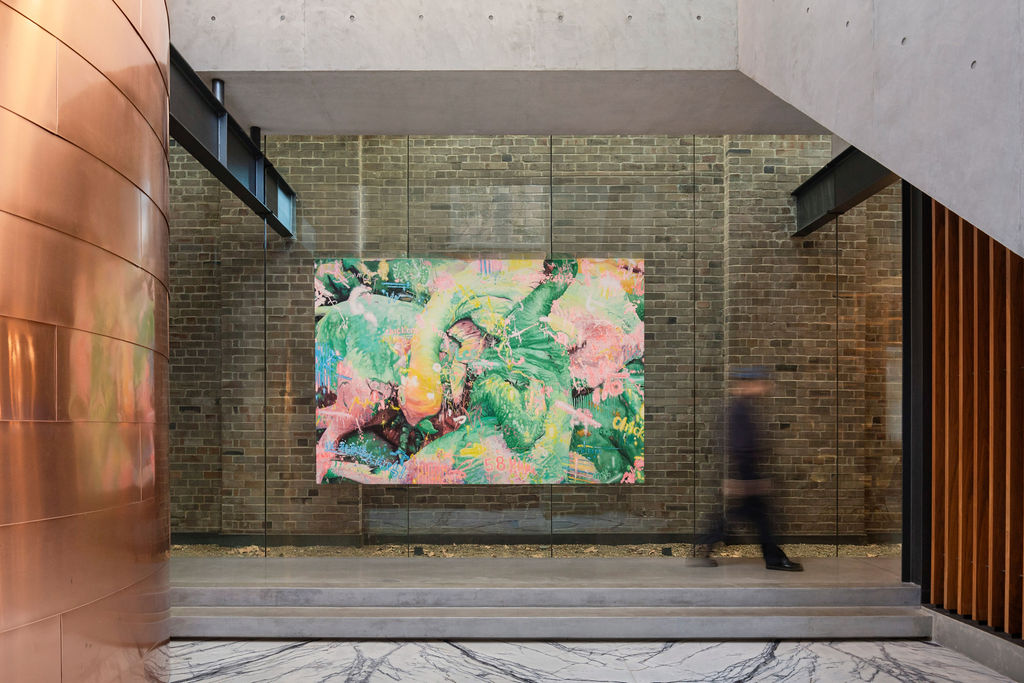SCIENCE FICTION MEETS MARKET REALITY: ANDERS SÖRMAN-NILSSON ON THE FUTURE OF PROPERTY
Global futurist Anders Sörman-Nilsson says AI, climate change and shifting demographics are rewriting the rules of real estate.
“Today’s luxury is tomorrow’s expectation.”
It was one of Anders Sörman-Nilsson’s throwaway lines – but the kind that sticks. The Swedish-Australian futurist wasn’t talking about marble benchtops or rooftop pools. He meant robots in the home, AI personal assistants and cities so climate-resilient they could add decades to your life.
For Sörman-Nilsson, science fiction is no longer something you watch. It’s the world you live in, and if you’re in property, you’d better be designing for it now.
Take transport. In Los Angeles recently, he rode in a Waymo self-driving car and “never felt safer”. No human driver, no small talk, no risk of road rage. Just seamless, sensor-driven efficiency. Or healthcare. His GP now uses an AI medical scribe to complete reports and referrals, saving hours of paperwork. For patients, it means more time with the doctor and medical instructions translated into plain English.
These examples aren’t novelties. They’re signals. “AI is taking the robot out of the human,” he told the audience.
“It’s letting us do less of the menial and the mundane, and more of the meaningful and the human.”
Speaking to more than 100 property and investment leaders at the inaugural Kanebridge Quarterly Property Summit in Sydney, Sörman-Nilsson set out a future that is as exhilarating as it is confronting.
The night opened with a data-rich address from expert economist Dr Andrew Wilson, who set the economic scene for the year ahead.
His forecast: a robust housing market through 2025, underpinned by falling interest rates, inflation easing back to the RBA’s target, and a still-strong labour market.

From there, the conversation shifted from the short-term economic outlook to the long-term forces reshaping the industry, as futurist Sörman-Nilsson took the stage.
Over the course of an hour, Sörman-Nilsson unpacked the three significant forces reshaping real estate: AI, demographics and design, and why ignoring them could be fatal for investors, developers and cities alike.
One of his sharpest warnings was about climate change and the emergence of “climate oases” – the select cities and regions that will remain liveable and attractive as others become too hot, flood-prone or costly to protect.
“In Australia, Hobart, Launceston, and Canberra are among the most climate-resilient,” he said.
“People are already moving there for cooler temperatures and security. That’s not a trend you want to ignore if you’re thinking about where value will hold.”
Demographics, too, are shifting in ways the property market can’t afford to overlook. By 2035, Sörman-Nilsson predicts that 40 per cent of households could be single-person households. Fewer children, more solo living and longer lifespans will require housing models that prioritise community, flexibility and wellness over sheer size.
“If you want to live in Sydney in the future,” he quipped, “you might never know your grandkids because they’ll have to move somewhere they can actually afford.”
The implications for design are profound. He points to “Blue Zone” principles – the habits and environments linked to long, healthy lives – as a template for next-generation developments.
Think walkable neighbourhoods, green spaces, social connection and accessible services.
“Singapore has become the first urban Blue Zone by design,” he said. “If they can do in 20 years what took Okinawa hundreds, there’s no excuse for our cities not to aim higher.”
For all the provocation, there was consensus in the room. Panellist Darren Younger, CEO of Assetora, said the opportunity for property to integrate technology at the foundational level has never been greater.
“Technology isn’t just an add-on anymore. It’s becoming the foundation for how we design, transact and manage property,” he said. “From fractional ownership to AI-driven maintenance systems, the innovations are here; we just need to deploy them.”
Want more? Read the full story in the spring issue of Kanebridge Quarterly, here.
The PG rating has become the king of the box office. The entertainment business now relies on kids dragging their parents to theatres.
From farm-to-table Thai to fairy-lit mango trees and Coral Sea vistas, Port Douglas has award-winning dining and plenty of tropical charm on the side.
From the shacks of yesterday to the sculptural sanctuaries of today, Australia’s coastal architecture has matured into a global benchmark for design.
In the land down under, the beach is in our DNA. So is it any wonder that Australian architecture is leading the world in luxury coastal design?
With about 85 per cent of our population living within 50 kilometres of the coastline, we’ve perfected the art of the beach house. Yet over the past two decades, there’s been a sophisticated shift in the traditional coastal cottage.
The residential revolution that has washed over our most valuable waterfront locations has replaced the original weatherboard “shacks” by the sea with a contemporary design movement shaped by admiration and respect for the natural environment.
No longer simply about the view, today’s coastal architecture is about creating beautiful homes that perform seamlessly in an increasingly volatile climate while meeting the rising tide of high-net-worth buyers who want it all.
From infinity pools to wellbeing spaces that connect with nature, one-time weekenders have been transformed into permanent escapes, providing year-round indulgence.

An island home
Belgian-born, Tasmania-based architect Lara Maeseele believes the quintessential coastal home has become a finely tuned instrument. With more vacant land to experiment with, and lower entry prices, she says the Apple Isle is perfectly placed for architects and homeowners to explore the new-age beach house.
“A highlight in Tassie is you can find these amazing vacant blocks on the coastline, and still be blown away by the unexpected views,” she says.
Having studied in Belgium and worked in London, Maeseele brings a northern European minimalist sensibility to the Australian beach house.
“Our way of life is so complex. When we get home, it’s nice to slow down, to declutter and find some peace and quiet.”
Nebraska House on Bruny Island took home the 2025 HIA Tasmanian Home of the Year and earned a commendation at the Houses Awards, but Maeseele still affectionately refers to her design overlooking the D’Entrecasteaux Channel as a “shack.”
“What we tried to do was make sure that from the foreshore, it was kept small and consistent with the neighbouring properties, and that’s the luxury element that I see in the shack. It sits quietly in its setting.”
With a water backdrop from most rooms, she says the ocean was a primary player when designing the house, but light was just as important for the clients.
“Both the western and eastern elevations slide wide open so it feels like a bit of an umbrella,” she says. “Then in winter, it’s fully insulated and glazed. When the sun sets, you have the most beautiful evenings, feeling cosy and sheltered while watching the wind and water outside.”
True to her European roots, Maeseele believes that when it comes to aesthetically pleasing and functional coastal design, the less-is-more approach should drive every project.
“We’re on an island, so we’re very aware any build leaves an impact,” she says. “We chose lightweight materials so, in the end, the house could be dismantled and the timber reused.”

Thriving by the sea
Sydney architect Jon King, who has designed both beach houses and boutique hotels, says the new generation of coastal design is a balancing act between luxury and environment.
Even in today’s dazzling designs, he believes comfort should still overshadow spectacle.
“If you’re going to make an exceptional beach house, it has to adapt. It needs to be beautiful when the sun is shining and the whales are jumping out of the water, but the next day it needs to withstand horrendous southerlies and wild storms,” he says.
“The material choices are vital because they need to look great, but last in that salty environment and in extreme winds and rain.”
What was once the domain of fibro cottages has developed into a sea of enviable, state-of-the-art designs.
“For a long time, we lived simply in beach environments because the land was cheap and our buildings were unsophisticated. But now, living on the coast has become coveted, even fetishised. People are making statements through architecture, and that changes everything.”
He says that in an effort to connect with nature, the temptation can be to build with vast walls of glass to capture the ultimate panorama, but subtle design can be more successful when it gives the dramatic backdrop a curated cameo.
“Most coastal locations are suburban in nature with small blocks and neighbours either side, so you can’t always get the view you want,” he says.
“But you can frame it beautifully rather than opening everything up to the elements.”
Cheyne Fox of White Fox Gold Coast, who has recently listed one of only two houses on Hayman Island in the Whitsundays, agrees that Australia’s coastal homes are unparalleled.
“Gone are the days when people wanted their properties to stand out and look at odds with the surrounds. Today’s luxury designs are very much about fitting in,” Fox says.
The Residence at Hayman spans three levels and offers more than 1,400 square metres of internal and external living space.
Designed by the late, internationally renowned architect Kerry Hill, it also features breezeways, terraces and an infinity pool designed to embrace the subtropical environment.
“When you get to Hayman Island, you get calico bags. There are no plastic bottles or even cars. There is a true respect for the environment, being so close to the Great Barrier Reef. And as such, the architecture reflects that ethos.”
She says high-net-worth buyers will pay top dollar for such indulgent and considered coastal designs.
“This is a once-in-a-lifetime proposition for a purchaser, but also a once-in-a-lifetime proposition for an agent.”
Read the full story here.
A luxury lifestyle might cost more than it used to, but how does it compare with cities around the world?
From the shacks of yesterday to the sculptural sanctuaries of today, Australia’s coastal architecture has matured into a global benchmark for design.



















